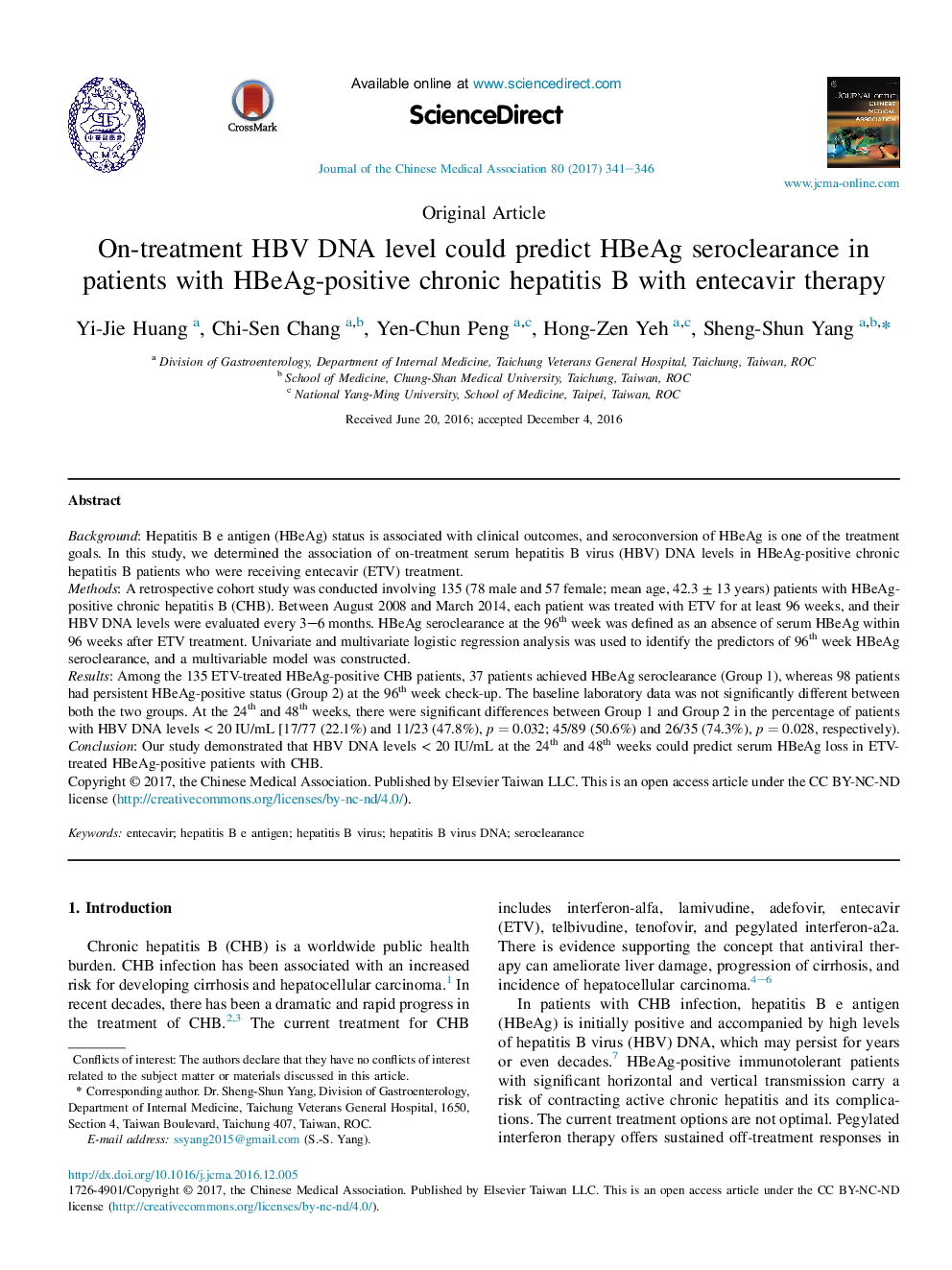| Article ID | Journal | Published Year | Pages | File Type |
|---|---|---|---|---|
| 5679779 | Journal of the Chinese Medical Association | 2017 | 6 Pages |
BackgroundHepatitis B e antigen (HBeAg) status is associated with clinical outcomes, and seroconversion of HBeAg is one of the treatment goals. In this study, we determined the association of on-treatment serum hepatitis B virus (HBV) DNA levels in HBeAg-positive chronic hepatitis B patients who were receiving entecavir (ETV) treatment.MethodsA retrospective cohort study was conducted involving 135 (78 male and 57 female; mean age, 42.3 ± 13 years) patients with HBeAg-positive chronic hepatitis B (CHB). Between August 2008 and March 2014, each patient was treated with ETV for at least 96 weeks, and their HBV DNA levels were evaluated every 3-6 months. HBeAg seroclearance at the 96th week was defined as an absence of serum HBeAg within 96 weeks after ETV treatment. Univariate and multivariate logistic regression analysis was used to identify the predictors of 96th week HBeAg seroclearance, and a multivariable model was constructed.ResultsAmong the 135 ETV-treated HBeAg-positive CHB patients, 37 patients achieved HBeAg seroclearance (Group 1), whereas 98 patients had persistent HBeAg-positive status (Group 2) at the 96th week check-up. The baseline laboratory data was not significantly different between both the two groups. At the 24th and 48th weeks, there were significant differences between Group 1 and Group 2 in the percentage of patients with HBV DNA levels < 20 IU/mL [17/77 (22.1%) and 11/23 (47.8%), p = 0.032; 45/89 (50.6%) and 26/35 (74.3%), p = 0.028, respectively).ConclusionOur study demonstrated that HBV DNA levels < 20 IU/mL at the 24th and 48th weeks could predict serum HBeAg loss in ETV-treated HBeAg-positive patients with CHB.
